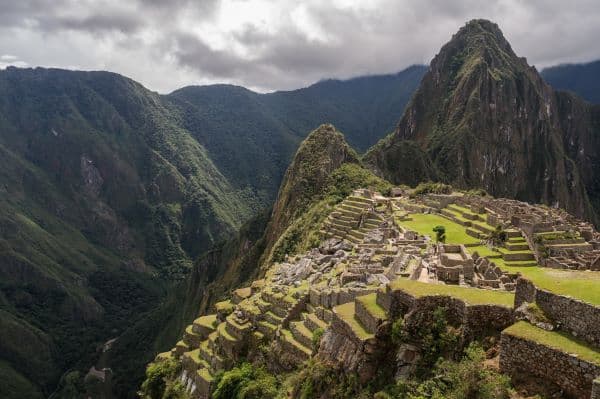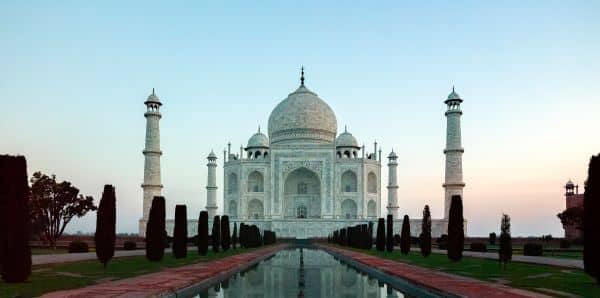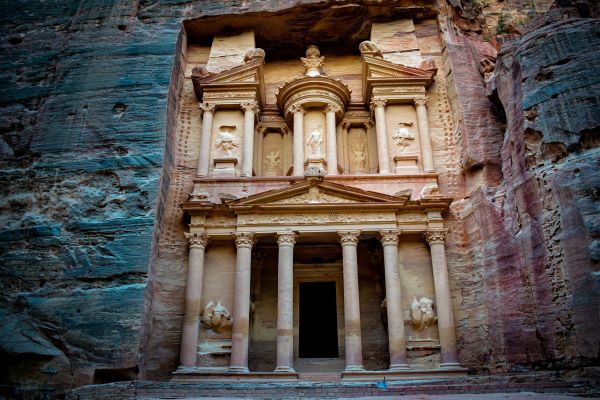Exploring historical sites is a journey through time, offering a unique window into the past. These sites are not only architectural marvels but also guardians of history, each telling a story of cultural significance and human ingenuity. This journey around the world highlights must-see historical landmarks, each with its own unique narrative. From the ancient walls of China to the mysterious ruins of Peru, these sites serve as a testament to the diverse and rich tapestry of human civilization. Enriching and enlightening, they beckon travelers to discover the stories they hold.
Contents
The Great Wall Of China

The Great Wall of China, a formidable structure stretching over 13,000 miles, represents one of the most impressive architectural feats in human history. Originally built to protect the Chinese states from invasions, it has stood for centuries as a symbol of resilience and strength. Its construction, spanning various dynasties, involved millions of workers and is steeped in rich history and folklore. Today, the Great Wall continues to mesmerize with its grandeur and the tales it tells of China’s past.
Visitors to the Great Wall are greeted with an awe-inspiring view that stretches across northern China’s landscape. The sections near Beijing, like Badaling and Mutianyu, are most accessible for tourists and offer a blend of restored and rugged segments. Exploring these parts of the Wall provides an opportunity to witness the contrast between ancient defensive architecture and the serene beauty of the surrounding nature. Tips for the best experience include choosing less crowded times and considering a guided tour for insightful historical context.
Machu Picchu, Peru

Machu Picchu, nestled high in the Andes Mountains of Peru, remains one of the most enigmatic ancient sites in the world. This 15th-century Incan citadel was unknown to the outside world until its rediscovery in 1911 by Hiram Bingham. Shrouded in mystery, it’s believed to have been a royal estate or religious retreat. The engineering prowess displayed in its construction, especially the intricate stonework that has withstood centuries of weathering, highlights the sophistication of the Incan civilization.
For modern adventurers, a visit to Machu Picchu is a journey back in time. Trekking the Inca Trail offers a physically demanding yet rewarding approach, revealing stunning vistas and lesser-known ruins along the way. Alternatively, trains from Cusco provide a more accessible route to the site. Upon arrival, visitors are advised to take time to absorb the serene atmosphere and marvel at the panoramic views of the surrounding mountain ranges, a truly unforgettable experience.
The Colosseum In Rome, Italy

The Colosseum in Rome, a symbol of the Roman Empire’s grandeur, stands as a monumental testament to ancient engineering and entertainment. Constructed in the first century AD, it was the largest amphitheater of its time, hosting gladiatorial contests, public spectacles, and theatrical performances. Its enduring structure, despite centuries of earthquakes and stone pillaging, continues to captivate historians and tourists alike. The Colosseum not only symbolizes ancient Rome’s architectural prowess but also reflects the societal and cultural aspects of the time.
Tourists visiting the Colosseum can expect a step back into the world of ancient Rome. The elliptical structure, with its complex system of vaults and arches, offers a glimpse into the ingenuity of Roman construction. Guided tours provide insights into the life of gladiators and the spectacles that once filled the arena. The best times to visit are during the early morning or late afternoon to avoid the crowds. Nearby attractions like the Roman Forum and Palatine Hill make for a comprehensive historical experience.
Taj Mahal, India

The Taj Mahal, located in Agra, India, is more than just a stunning example of Mughal architecture; it is a monument to love. Commissioned in the 17th century by Emperor Shah Jahan in memory of his beloved wife, Mumtaz Mahal, this ivory-white marble mausoleum combines elements from Islamic, Persian, and Indian architectural styles. The Taj Mahal is renowned for its symmetrical beauty and intricate details, including calligraphy, precious gemstones, and detailed carvings. Its gardens and reflecting pool amplify its ethereal appearance, making it a sight to behold.
Visitors to the Taj Mahal are often struck by its tranquil ambiance and the romantic story behind its construction. The best time to visit is at sunrise when the soft morning light bathes the marble in a golden hue, creating a magical atmosphere. Visitors are encouraged to explore the surrounding complex, including the mosque and guest house, which complement the mausoleum’s design. Cultural norms and environmental considerations are important to remember, ensuring this world heritage site remains preserved for future generations.
Pyramids Of Giza, Egypt

The Pyramids of Giza, standing on the outskirts of Cairo, are among the most iconic and enduring symbols of ancient Egypt. Built as tombs for pharaohs during Egypt’s Fourth Dynasty, these monumental structures showcase the ancient Egyptians’ mastery in architecture and their beliefs in the afterlife. The Great Pyramid, the largest of the three, was the tallest man-made structure for over 3,800 years. These pyramids, coupled with the enigmatic Sphinx nearby, continue to draw fascination and speculation regarding their construction methods and purpose.
For those planning to visit the Pyramids of Giza, the experience is both awe-inspiring and enlightening. The sheer scale of the pyramids, viewed up close, is humbling, while the Sphinx adds an air of mystery. Guided tours are recommended for a deeper understanding of the history and myths surrounding these ancient wonders. Visitors should also be prepared for the desert environment and be aware of local vendors and guides offering unsolicited services.
Stonehenge, United Kingdom

Stonehenge, located in the English countryside, is a prehistoric monument that has puzzled archaeologists and historians for centuries. This ring of standing stones, estimated to be erected around 2500 BC, is believed to have been used for ceremonial or religious purposes. The alignment of the stones with the solstices suggests a connection to astronomy. Stonehenge’s construction, involving the transportation of massive stones over long distances, remains an impressive feat of Neolithic engineering.
Visitors to Stonehenge can explore the surrounding landscape, which is rich in other Neolithic and Bronze Age monuments. The visitor center offers detailed exhibitions about the monument’s history and the people who built it. For a complete experience, it is recommended to visit during the summer or winter solstice when special events are often held. Access to the stone circle itself is limited, but the site’s atmosphere and the panoramic view of the surrounding countryside are still accessible and enchanting.
Petra, Jordan

Petra, an ancient city in Jordan, carved into red sandstone cliffs, is an archaeological and architectural marvel. Known as the Rose City for the color of the stone, it was once a thriving trading center and the capital of the Nabatean kingdom. Petra is famous for its rock-cut architecture and water conduit system, which showcase the Nabateans’ advanced understanding of engineering and hydrology. The city’s most iconic structure, the Treasury, appears like a mirage, a testament to the artistic and architectural genius of its creators.
When exploring Petra, visitors embark on a journey through narrow gorges and past awe-inspiring structures that emerge from the rock faces. The site spans over 60 square kilometers, offering a wealth of tombs, temples, and ancient dwellings to discover. The hike to the Monastery provides breathtaking views and a perspective on the sheer scale of the city. Early morning or late afternoon visits are recommended for the best light for photography and to avoid the midday heat.
The Bottom Line
These historical sites offer more than just a glimpse into the past; they provide an opportunity for profound connection and understanding. Each landmark tells a unique story, woven into the fabric of human history. They remind visitors of the breadth of human achievement and the timeless nature of our quest to leave a lasting mark. Whether it is the architectural grandeur of the Colosseum or the mystical allure of Machu Picchu, these sites are a testament to the enduring spirit of human creativity and resilience. They are not just destinations but gateways to the rich tapestry of human history and a call to preserve these wonders for future generations.